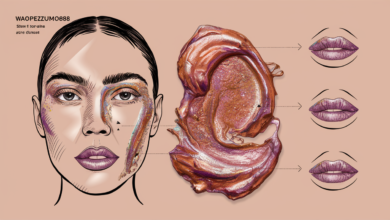FDA Classifies Recalled Waffle Product As Class ii.

When it comes to food safety, the FDA (Food and Drug Administration) plays a crucial role in ensuring that the products we consume are safe for us. Recently, the FDA classified a recalled waffle product as “Class II,” a designation that has many people asking, “What does that mean for me?” Food recalls can feel unsettling, especially when it’s a product you regularly enjoy, like waffles. As consumers, we trust that the products we buy are safe, but sometimes, due to manufacturing errors or contamination risks, they get pulled from store shelves.
In this blog post, we’ll dive into what it means for a product to be classified as Class II, share some personal stories about recalls, and provide some helpful insights into how these situations are handled. By the end of this article, you’ll feel more informed about what you can do if you find yourself facing a recall situation.
What Does Class II Mean in FDA Terms?
When the FDA classifies a recalled product as “Class II,” it’s essential to understand the context. The FDA uses three classes to categorize recalls based on the level of risk they pose to consumers:
- Class I: Products that will cause serious health problems or death.
- Class II: Products that may cause temporary or reversible health issues or a slight risk of serious harm.
- Class III: Products that are unlikely to cause any harm but are still being recalled for other reasons (such as mislabeling or packaging issues).
So, when the FDA classifies a recalled waffle product as Class II, it indicates that while the risk is not immediately dangerous, there is still a concern. For instance, contamination with something like allergens, bacteria, or incorrect labeling could lead to mild allergic reactions, stomach discomfort, or other temporary health issues.
A Personal Story: When I Found Out My Favorite Waffle Brand Was Recalled
Let me share a story with you. A few years ago, I remember buying a frozen waffle brand I’d loved for years. It was easy, quick, and tasted great – perfect for busy mornings. One day, I saw the recall announcement pop up on my phone. My heart sank. The product was classified as Class II due to a potential risk of contamination with undeclared allergens, specifically nuts.
I didn’t have any allergies, but the thought of someone who was allergic to nuts eating those waffles and getting sick made me realize how serious recalls can be. I immediately checked my freezer to make sure I hadn’t bought that specific batch, and luckily, I hadn’t. I returned the product, and it was a reminder for me to always stay aware of food recalls, even for products I thought I could trust.
How Can You Check If You Have a Recalled Product?
When a recall happens, the FDA and the company behind the product usually release a list of specific batches or lot numbers that are affected. If you’re unsure if the waffles in your freezer are part of the recall, check the packaging for a code or batch number. It’s always a good idea to stay updated by checking the FDA’s website or your product’s manufacturer’s website for recall notices.
Another tip is to keep the receipts for products you purchase, especially for food items you buy in bulk. This way, you can easily track whether or not you need to return a product in case of a recall. If you’ve already consumed the product, and you notice any unusual symptoms, it’s wise to consult a healthcare provider to ensure everything is okay.
The Importance of Reporting a Recall
When a recall happens, the FDA relies on consumers to report adverse effects they experience after consuming a product. This helps the FDA monitor how well a recall is working and whether further action is needed. So, if you’ve had any issues with the recalled waffles or any other food, it’s essential to report it. Many companies offer easy ways to submit reports on their websites or through their customer service lines.
Conclusion: Stay Informed and Stay Safe
Food recalls can be overwhelming, but they’re a necessary part of keeping consumers safe. Understanding the different levels of risk, like a Class II recall, helps us navigate these situations more confidently. It’s crucial to stay informed by regularly checking recall lists, staying updated on news, and following the steps outlined in this blog. After all, we all want to enjoy our favorite food products without worry, but we also want to make sure they’re safe to consume.
So next time you hear about a food recall, remember to check your pantry and freezer, follow the manufacturer’s instructions, and don’t hesitate to report any health issues you experience. Food safety isn’t just about following the rules – it’s about protecting ourselves and our loved ones.
FAQ: Everything You Need to Know About Food Recalls
Q1: What should I do if I have the recalled waffles in my home?
A1: If you have the affected batch of waffles, check with the store or manufacturer for a refund or exchange. You can also dispose of them if you prefer not to return them.
Q2: How can I prevent buying recalled food in the future?
A2: Regularly check the FDA recall website, keep an eye on news reports about food recalls, and follow the manufacturer’s advice on their product pages. It’s also a good idea to inspect your food products before purchasing, especially when you know a recall has happened.
Q3: How does the FDA decide if a product is Class II?
A3: The FDA evaluates the potential health risks and categorizes recalls into three classes. A Class II recall is issued when there’s a risk of temporary or reversible harm, but the potential consequences are not life-threatening.




